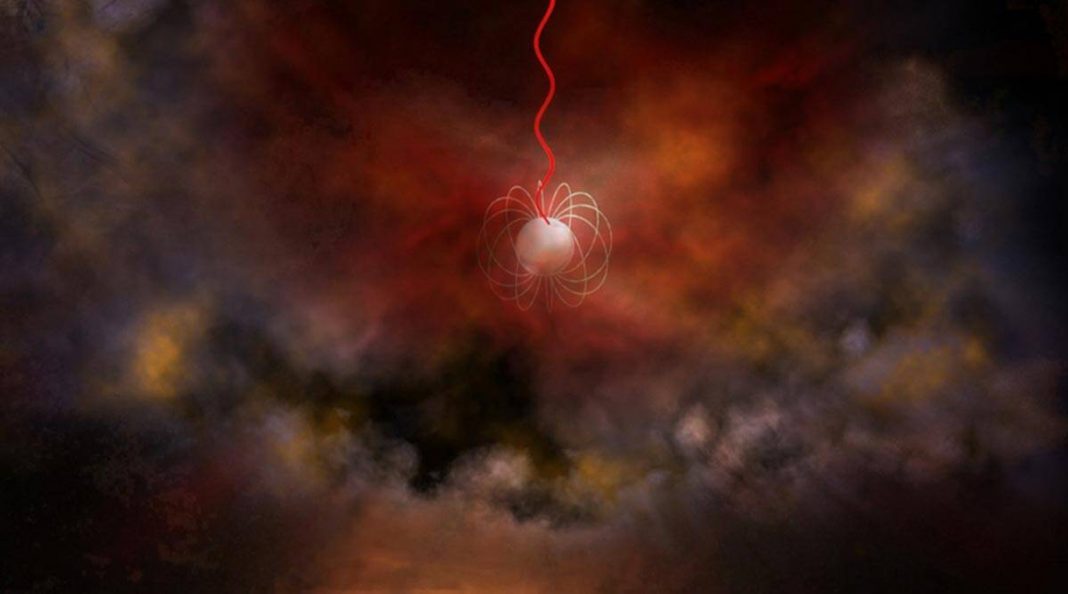Mysterious Fast Radio Burst detected for the second time ever.
Astronomers detected a signal from a galaxy believed to be nearly 3 billion light-years away called Fast Radio Burst (FRB). This Fast Radio Burst (FRB 20190520B) is said to be “co-located with a compact, persistent radio source and associated with a dwarf host galaxy of high specific star-formation.”
FRBs are intense and brief flashes of radio frequency emissions that typically last milliseconds. These usually repeat multiple times. Scientists are still yet to fully understand the phenomen which was first detected in 2007. This is the second time it was ever detected. A leading candidate for what generates these FRBs is a magnetar, which is a neutron star with a really strong magnetic field emitting radio waves.
Chinese space solar plant
According to recent reports, China plans to have a solar power plant in orbit as early as 2028, which is two years ahead of its original schedule that was proposed earlier. In 2028, the spacefaring nation will launch a test project in a satellite that will be at an altitude of 400 kilometres.
Best of Express Premium
 Premium
Premium Premium
Premium Premium
Premium Premium
PremiumThis satellite would convert solar energy into electricity and then convert that electricity into microwave radiation than can be transmitted to various fixed targets on our planet. From there, the microwave radiation can be converted back into electricity for use. The pilot project will only generate about 10 kilowatts, which is only enough to power a few homes. But this proof-of-concept can later be scaled to become a significant power source.
Using Apophis to test our defence
Named after the Egyptian god of chaos and darkness, Apophis was identified as one of the most hazardous asteroids that could impact Earth soon after it was discovered in 2004. But as astronomers tracked Apophis better, they ruled out the possibility of risk from the asteroid for at least another 100 years.
But to test the operational readiness of planetary defence systems, astronomers used Apophis’s close approach as a mock encounter with a new potentially hazardous asteroid. They removed Apophis data from a clearinghouse of asteroid data to see if international systems would successfully detect the asteroid. Not only was Apophis “rediscovered” by various astronomic surveys but the risk of collision was also ruled out soon after.
Artemis I Moon Mission wet dress rehearsal scheduled
After multiple failed attempts, NASA is scheduling the wet dress rehearsal for the Artemis I mission on June 20 at the Kennedy Space Center in Florida. The team will rehearse operations to load propellant into the rocket’s tank and conduct a full simulated countdown They will also drain the tanks and practice the timelines and procedures used at launch.
The wet dress rehearsal will happen over two days and can be watched along with live commentary on NASA Television, the NASA app and the NASA website. Once completed and successfully tested, the SLS rocket which will carry the Artemis missions will be the most powerful rocket ever built.
Hubble Space Telescope detects mass of isolated black hole in Milky Way
The Hubble Space Telescope has provided direct evidence for a lone black hole drifting though space by precise measurements, for the first time ever. Until now, measurements of black holes were usually inferred statistically or through their interactions in a binary system or at the core of a galaxy. Due to this, large black holes are usually discovered along with companion stars, making the newly-discovered “wandering” black hole an exception.
It is about 5,000 light-years away from the Earth, in the Carina-Sagittarius arm of the Milky Way galaxy. With its discovery, astronomers estimate that the nearest isolated stellar-mass black hole might be as close as 80 light-years away. To put that into perspective, the closest star to Earth, Proxima Centauri is about 4.2 light-years away.
